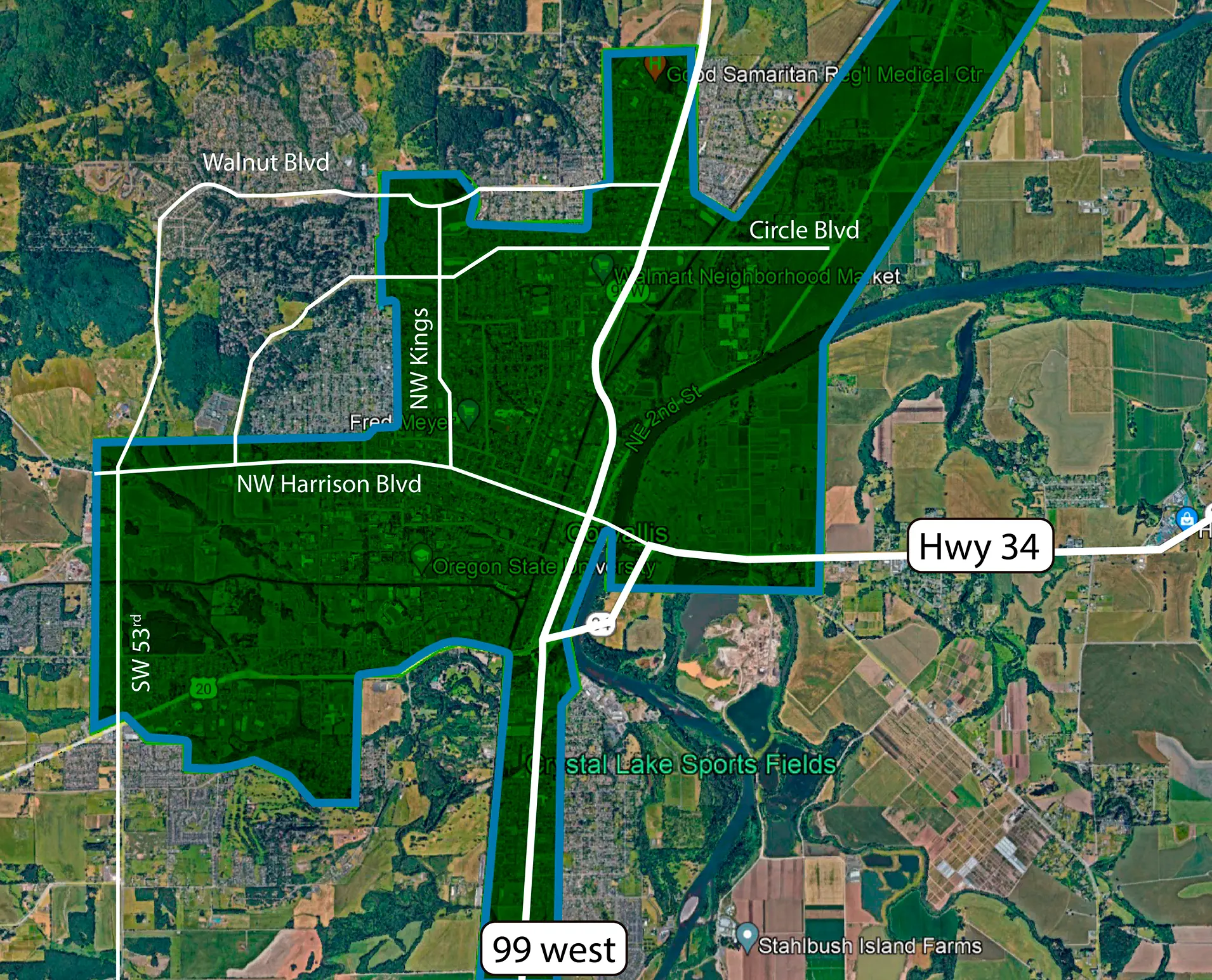Constructing a Custom Fiber Network for Columbia Gorge Education Service District

Bridging the Digital Divide for Rural Schools
The Columbia Gorge Education Service District (CGESD) is dedicated to enhancing educational opportunities for four rural school districts — some of the most remote in Oregon. But with schools scattered throughout Mt. Hood National Forest and the Columbia Gorge, the organization wasn’t able to complete its equitable mission for all students. The reason? Lack of broadband reliability. In places like Maupin, Oregon, if two people were streaming a video, a classroom of 30 wouldn’t have the bandwidth to take a state-mandated test.
“The equity model that we’re trying to make possible is one where a student’s education and access to resources isn’t jeopardized based on their location,”
said CGESD Technology Director Cody Harmon.
“These rural districts were operating on T1 and microwave internet for years,” said Harmon. “But those services don’t have the bandwidth when you need to test 30–50 kids all online at the same time. When we had the opportunity to build fiber, we jumped.”
Funding Through the Federal E-Rate Program
Like many rural districts, CGESD sought federal funding to make their fiber connectivity a reality. The organization applied and received funds through the Federal E-Rate Program. Funding is offered through the Universal Service Administrative Company’s (USAC) Schools and Libraries — under the direction of the Federal Communications Commission (FCC) — which assists U.S. schools and libraries to obtain affordable internet access and telecommunications services. With help from these funds, CGESD needed a telecom provider that could not only provide 1-gigabit services, but could actually build fiber to these remote regions.
LS Networks offered that solution and began construction of a customized fiber network in 2016. As the third-largest funding recipient in the Pacific Northwest of the E-Rate Program, LS Networks services schools and districts outside the Portland and Seattle metros. In total, LS Networks supports 62 Northwest school districts, providing broadband access to approximately 290,000 students.
“It was a herculean effort on part of LS Networks to build the infrastructure we needed,” said Harmon. “They really are the only one in the region offering that level of network customization. We are talking about a level of connectivity that is unprecedented for a community of that size.”
“When we sat down with telecom providers to discuss how to make this happen, the response was always, ‘we don’t offer that service in that region, but here’s what we can do,’” said Harmon. “The solution was always using old technology to fill the gaps, but that’s not what we were looking for. We needed a true fiber solution.”
Equitable Access to Technology
CGESD now offers rural 1A school districts the same caliber of broadband as 5A school districts located right off the main network infrastructure. Rural schools like those in Durfur, Oregon, can now participate in robotics programs, use Chromebooks in the classroom, and access the internet quickly for state testing, research and more.
“We are excited to offer rural schools and districts the bandwidth needed to connect students with the online tools they need to succeed,” said Adams.
“It’s a huge paradigm shift in terms of supporting our education mission and state testing requirements,” said Harmon. “LS Networks has a reputation for extreme reliability and steadfast service offering. For our teachers and students this translates to more access and resources in the classroom.”
The Columbia Gorge Education Service District (CGESD) was facing several challenges with its existing internet infrastructure. The district struggled with:
- Limited Bandwidth: The current network couldn’t handle the increased demand for online learning and digital tools, leaving schools with slow and unreliable connections.
- Frequent Outages: The older copper network was prone to interruptions, which disrupted both teaching and administrative tasks.
- Lack of Scalability: With the district expanding, there was concern that the existing setup wouldn’t be able to keep up with future internet demands.
To address these issues, LS Networks stepped in with a tailored solution. By building a custom fiber-optic network, LS Networks provided:
- Faster Speeds: The fiber network offered significantly higher bandwidth, ensuring that schools had the speed they needed to support digital learning tools.
- More Reliability: Unlike the previous copper-based system, the new fiber network is much more reliable, reducing outages and keeping both classes and administrative functions running smoothly.
- Room to Grow: The fiber-optic infrastructure is scalable, meaning the district can easily increase bandwidth as technology needs continue to evolve.
With this solution, LS Networks helped the CGESD enhance its internet connectivity, ensuring that the district’s schools are better equipped to meet the needs of students and staff for years to come.
Increase Your Bandwidth Like CGESD
Let’s increase your bandwidth by bringing lightning-fast fiber internet and the infrastructure to make it sustainable for your needs.


